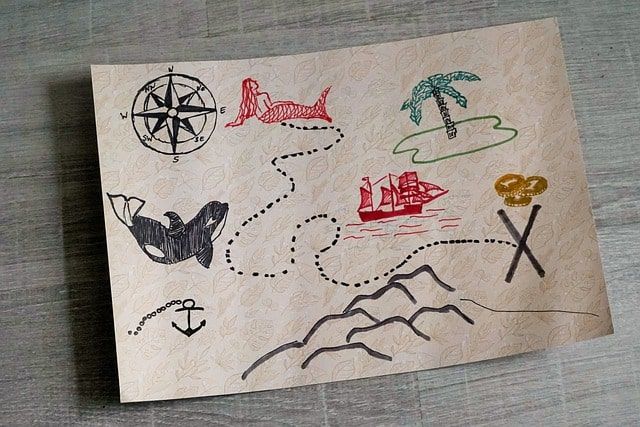What is the Coriolis force in a nutshell?
What is the Coriolis force? It is an effect that occurs due to the rotational motion of the Earth, which causes any moving body to deviate from its straight trajectory. This force is named after Gaspard Gustav Coriolis. He was a French mathematician and engineer who in 1835.

It was discovered some time ago that in the oceans there is a kind of river that advances in more or less fixed trajectories, making its way through the waters. We know them as tidal currents. In the same way, in the atmosphere there are large air currents or winds, circulating almost always in the same path.
The reason for the circulation of water and air, i.e. fluids, is the difference in temperature between two places on the earth's surface. Equatorial regions receive more solar radiation than polar regions. The air near the pole warms up, expands, and rises. The cold and dense air tends to fill the vacuum left by the warm air, generating currents of circulation: wind.
Both the ocean currents and the winds that make long journeys over the Earth should theoretically travel from south to north or from north to south if their movement were only due to the difference in temperature in the water or air between the poles and the equator. However, they suffer deviations in their trajectories that at one time could not be explained.
Let's try to clarify why a body moving on Earth from the equator to the poles deviates eastward, while one moving from the poles to the equator deviates westward.
Let us illustrate the force of this Coriolis effect by thinking first of rectilinear motion in two dimensions, then of circular motion in two dimensions, and finally of rectilinear motion in three dimensions, i.e., motions on a surface, a rotating object, and a motion in the common space.
You would be unable to do this, but imagine a person traveling in a train moving at a certain speed and wanting to hit with a stone an object standing still at the edge of the track. If this person aims directly at the object, his stone will fall "ahead" of the object, it will have been deflected in the direction in which the train is moving. This is because the speed with which we throw the stone and the speed of the train "add up".
The stone that a person throws has a movement that is composed of two parts: one that gives his arm is towards the object and another that gives the train forward (in fact there is a third component towards the ground, the stone is falling all the time).
Now let's think about a phonograph record. The whole disk makes a complete turn in a certain time (33 1/3 turns per minute). If someone were to put a spot of white paint on the outer edge of the disc and another near the center and then spin it, you would see that the two spots go around at the same time, but the one on the edge describes a larger circumference than the one in the center, i.e. it travels much more distance than the one in the center, it travels more centimeters every second. Perhaps you remember the thrill of being last when you played " tails" when your responsibility was to run faster, the farther away you were from the center.
Imagine now an ant trying to walk, while rotating the disk, from the spot on the edge to the spot in the center. The disk rotates clockwise. Then the ant going from the edge to the center will deviate from its path, "moving forward" also in the direction of the hands of the clock because at the beginning of its journey it carries a linear velocity in that direction, greater than that carried by the spot towards which it is heading.
Well, this effect of "moving forward" by inertia in the direction of motion, in a straight line as in the case of the train, and a circular direction as in the spinning disk, also happens when we are on a round body that rotates, as the Earth.
Our planet rotates around the axis that goes from the North Pole to the South Pole, from west to east, at a rate of one revolution every 24 hours. In each lap the points placed on the equator travel almost 40,000 kilometers, while the points placed near the poles travel only a few meters in 24 hours, or nothing if it is exactly the pole. If a mass of wind moves from the equator towards one of the poles, it will be "advanced" eastward by mercy, for the same reason as the ant or the stones. That is why the trade winds blowing from the equator to the poles are deflected to the east.
The force that causes this deflection is called the Coriolis force, after the 19th-century French mathematician Gaspard Gustave de Coriolis, who was the first to describe this effect.




